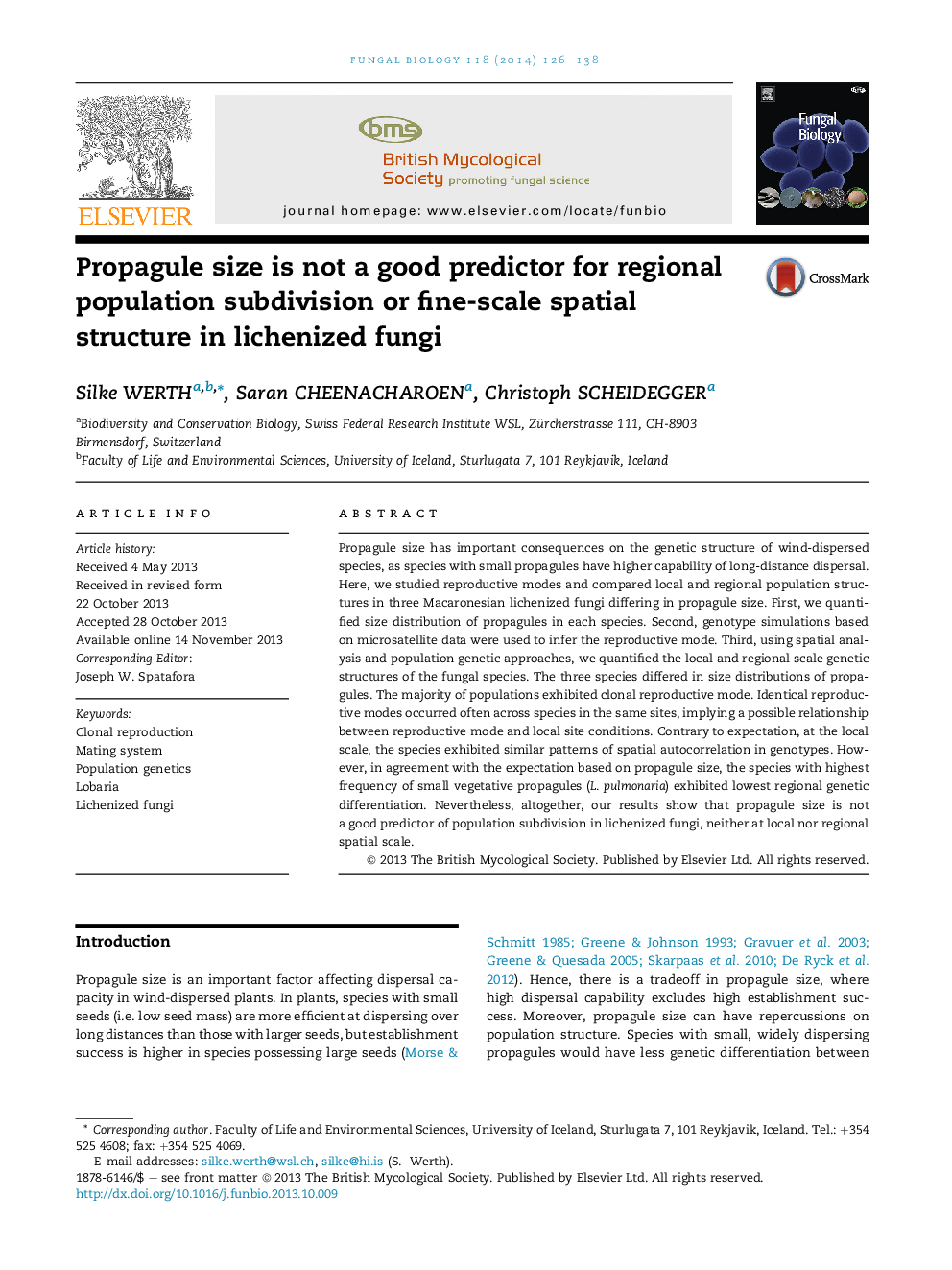| Article ID | Journal | Published Year | Pages | File Type |
|---|---|---|---|---|
| 4356857 | Fungal Biology | 2014 | 13 Pages |
•Study species: Two widespread and one endemic Lobaria.•Study area: Macaronesian laurisilva ecosystem (Canary Islands, Azores, Madeira).•Propagule size is not a good predictor of local or regional genetic structure.•The reproductive mode of Lobaria species is influenced by local site conditions.
Propagule size has important consequences on the genetic structure of wind-dispersed species, as species with small propagules have higher capability of long-distance dispersal. Here, we studied reproductive modes and compared local and regional population structures in three Macaronesian lichenized fungi differing in propagule size. First, we quantified size distribution of propagules in each species. Second, genotype simulations based on microsatellite data were used to infer the reproductive mode. Third, using spatial analysis and population genetic approaches, we quantified the local and regional scale genetic structures of the fungal species. The three species differed in size distributions of propagules. The majority of populations exhibited clonal reproductive mode. Identical reproductive modes occurred often across species in the same sites, implying a possible relationship between reproductive mode and local site conditions. Contrary to expectation, at the local scale, the species exhibited similar patterns of spatial autocorrelation in genotypes. However, in agreement with the expectation based on propagule size, the species with highest frequency of small vegetative propagules (L. pulmonaria) exhibited lowest regional genetic differentiation. Nevertheless, altogether, our results show that propagule size is not a good predictor of population subdivision in lichenized fungi, neither at local nor regional spatial scale.
